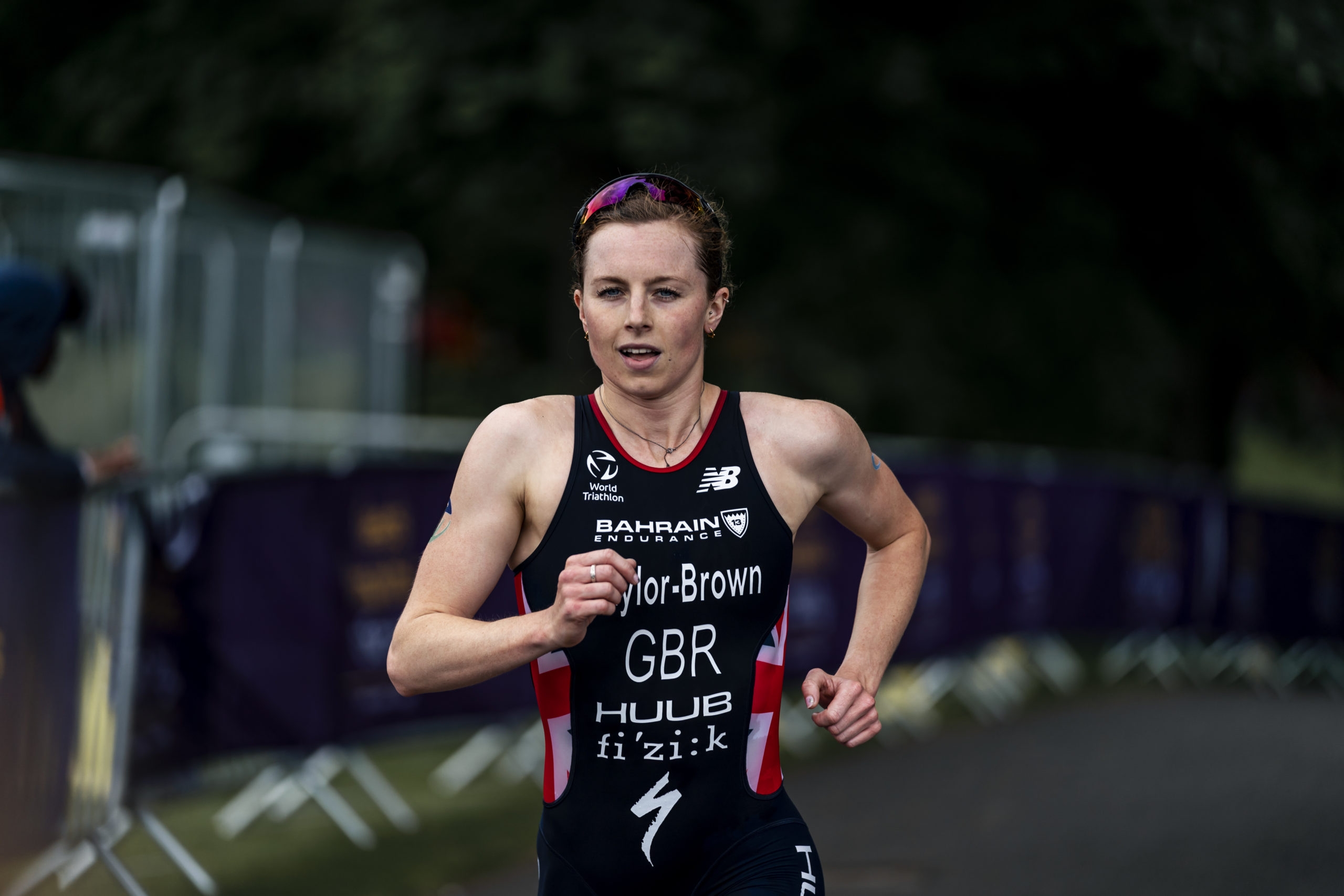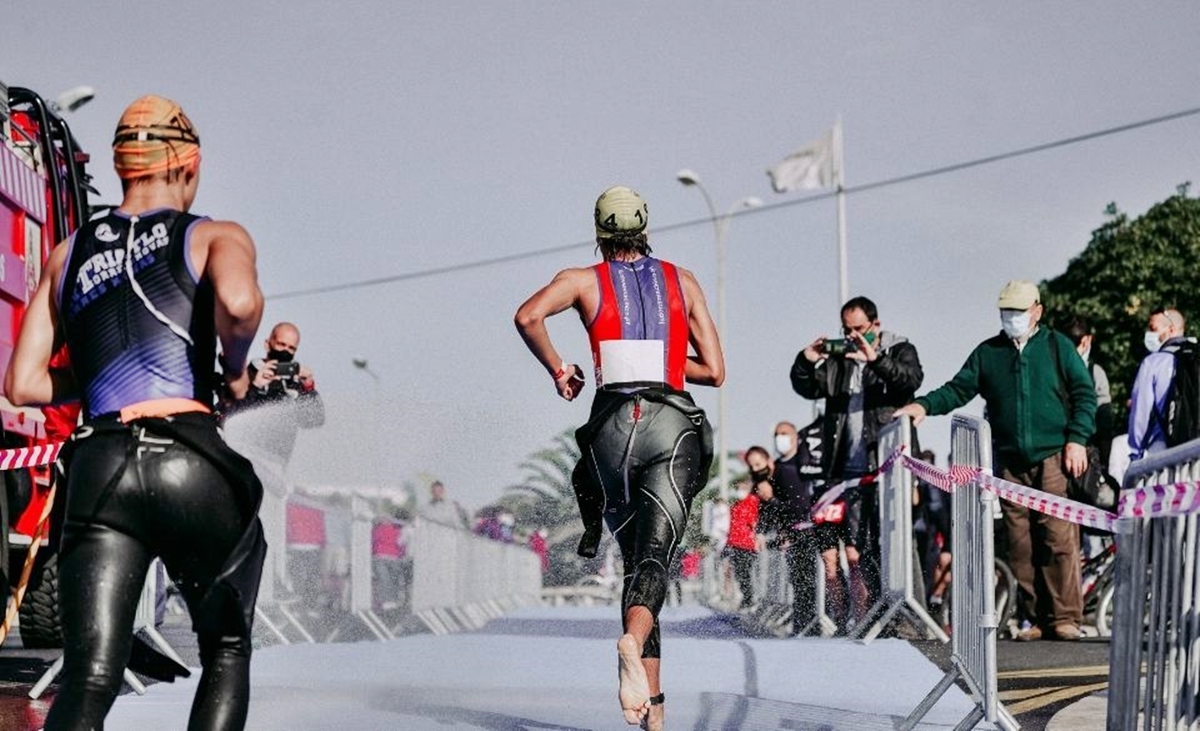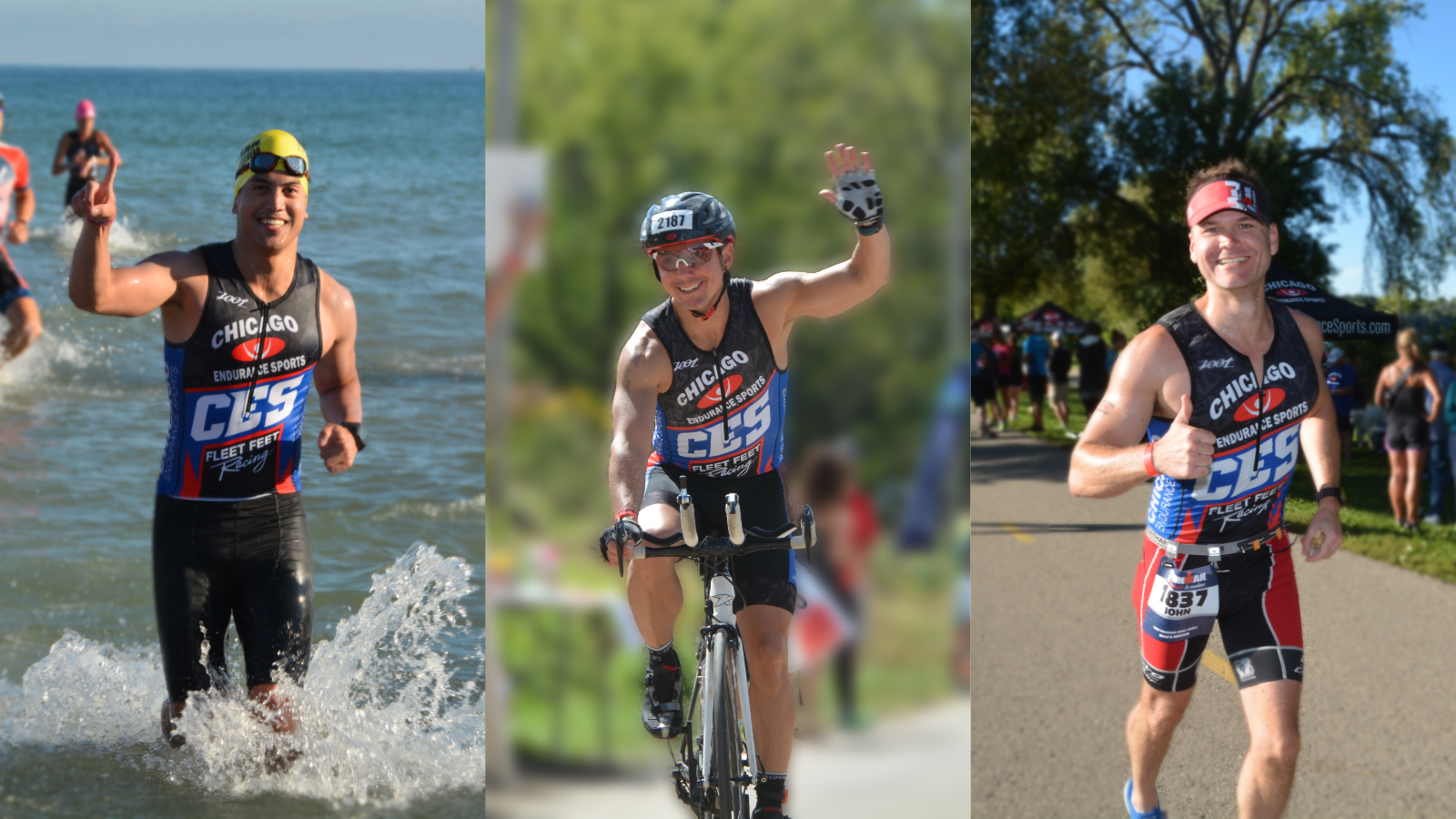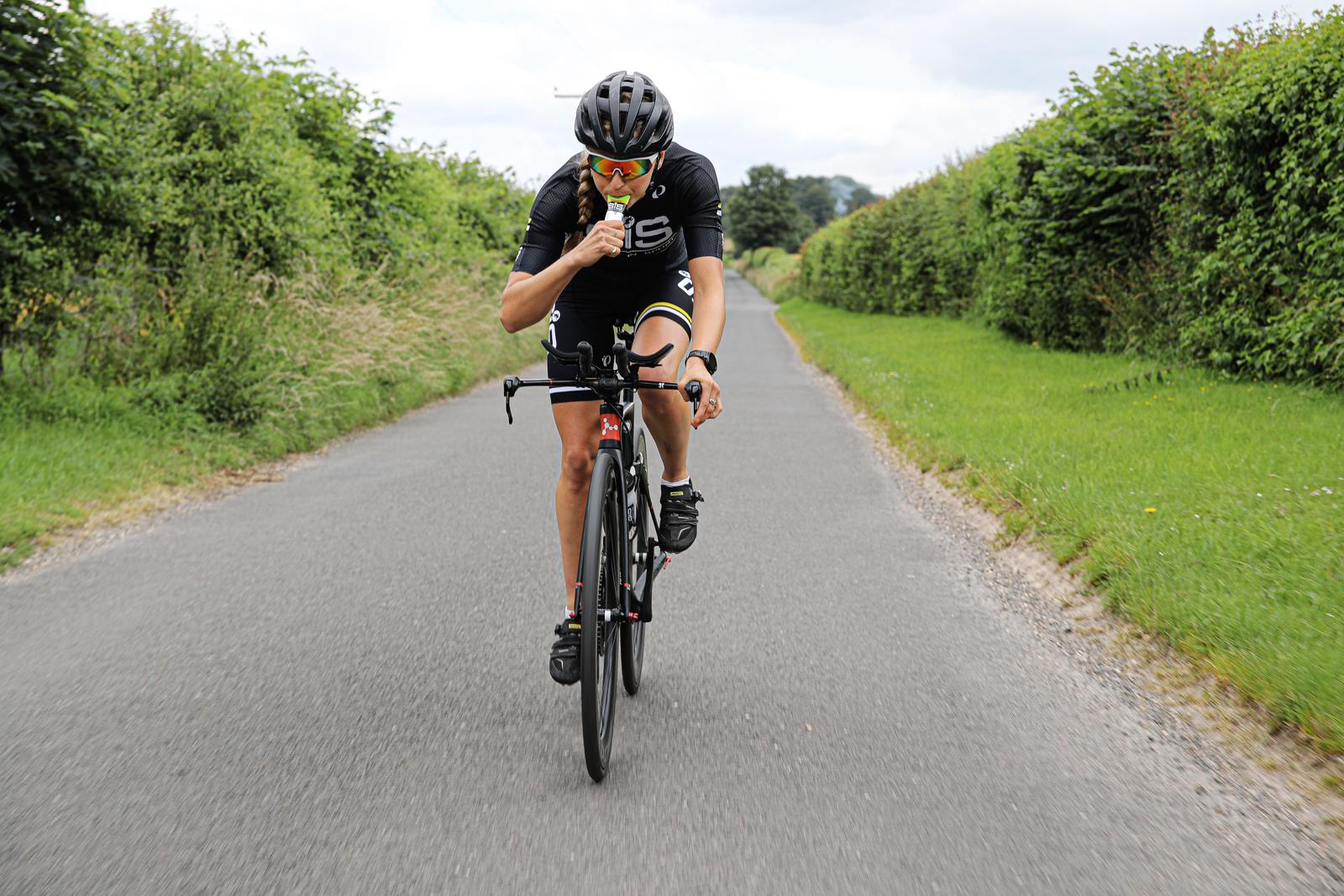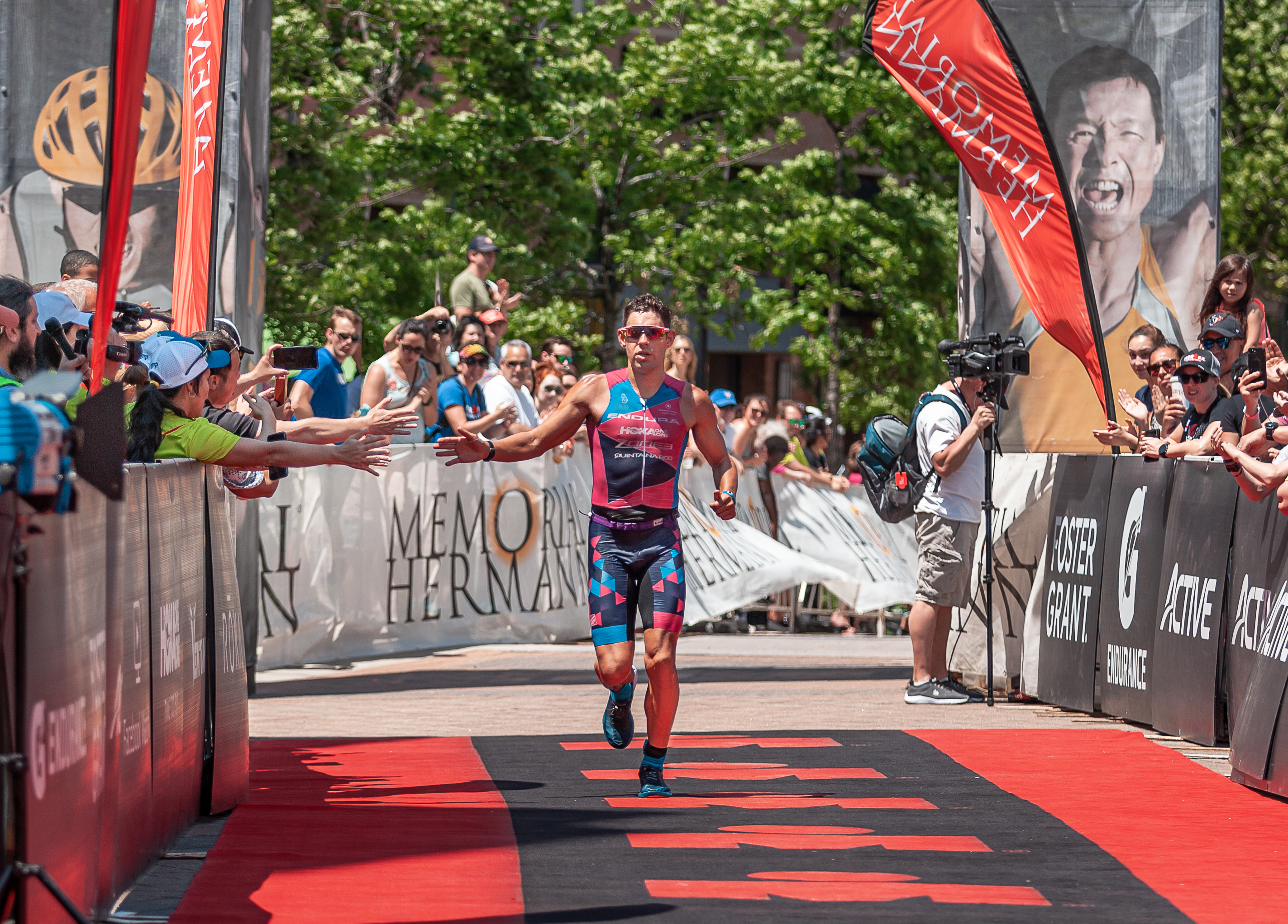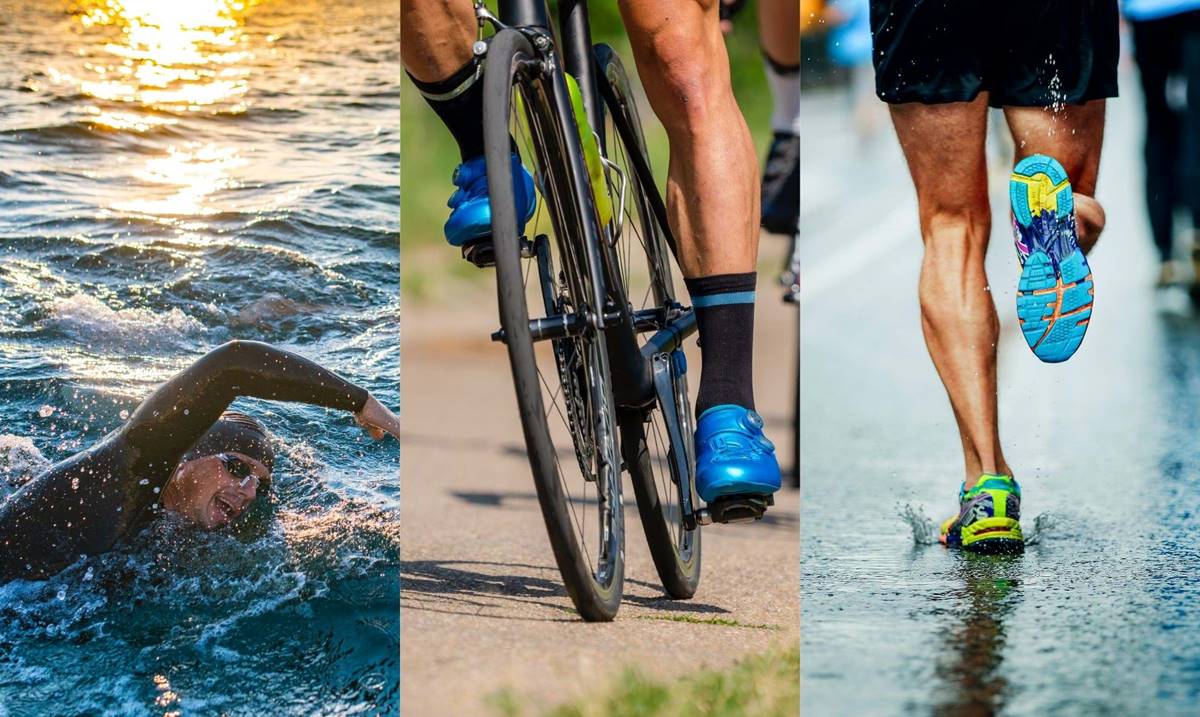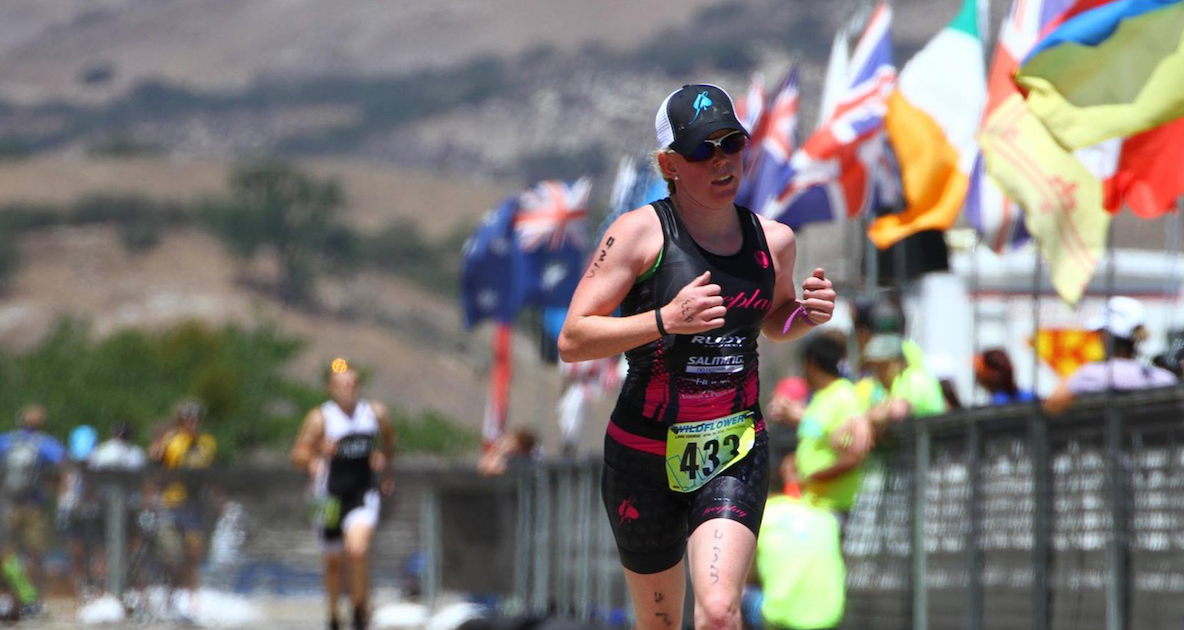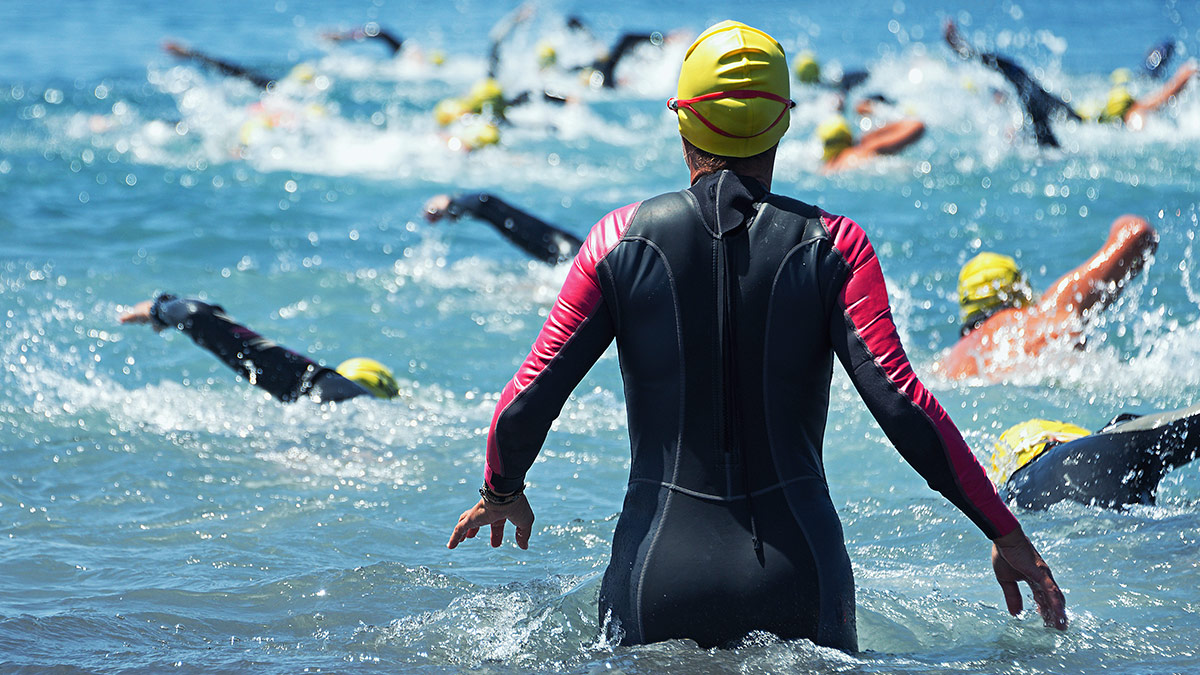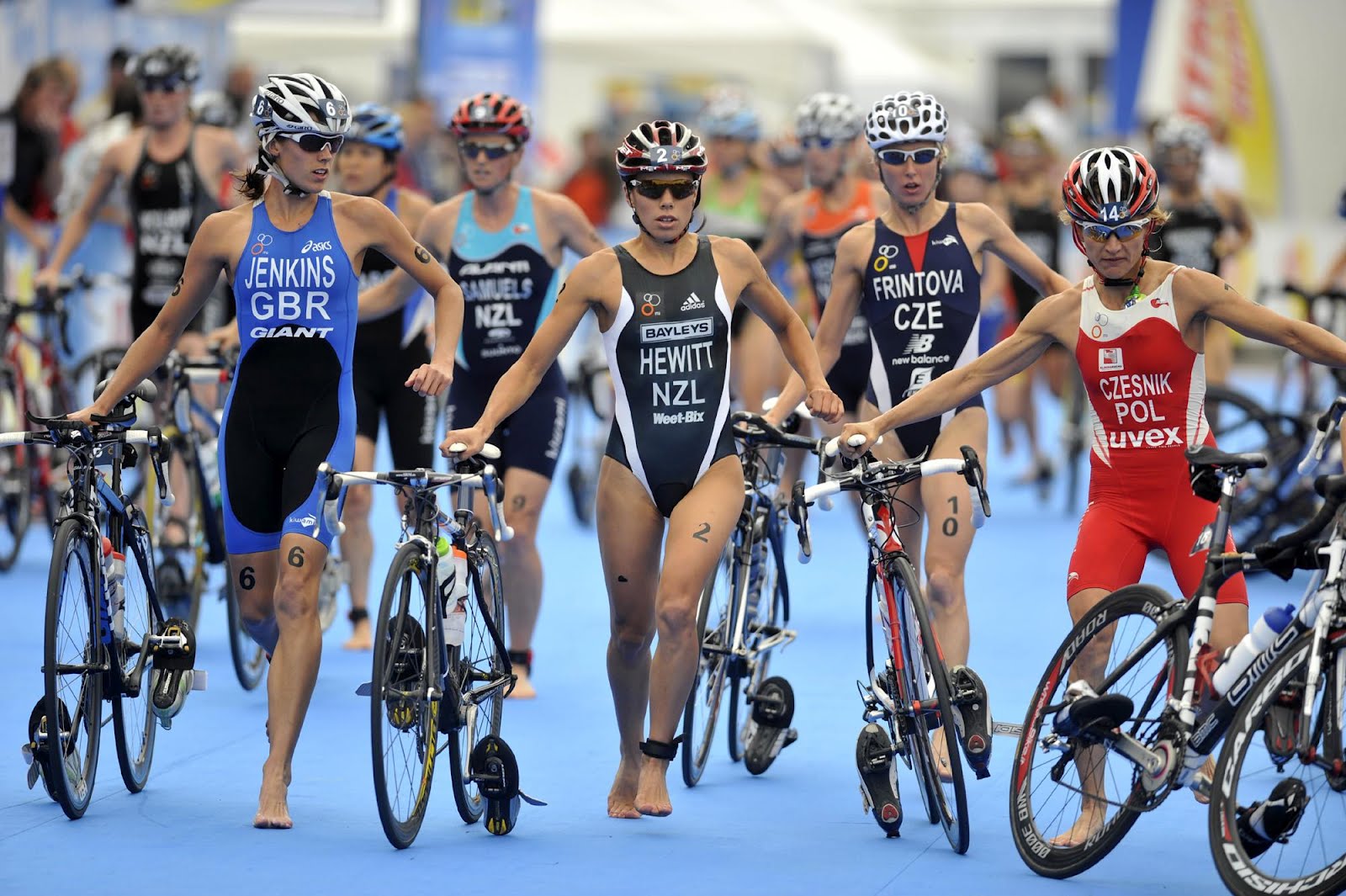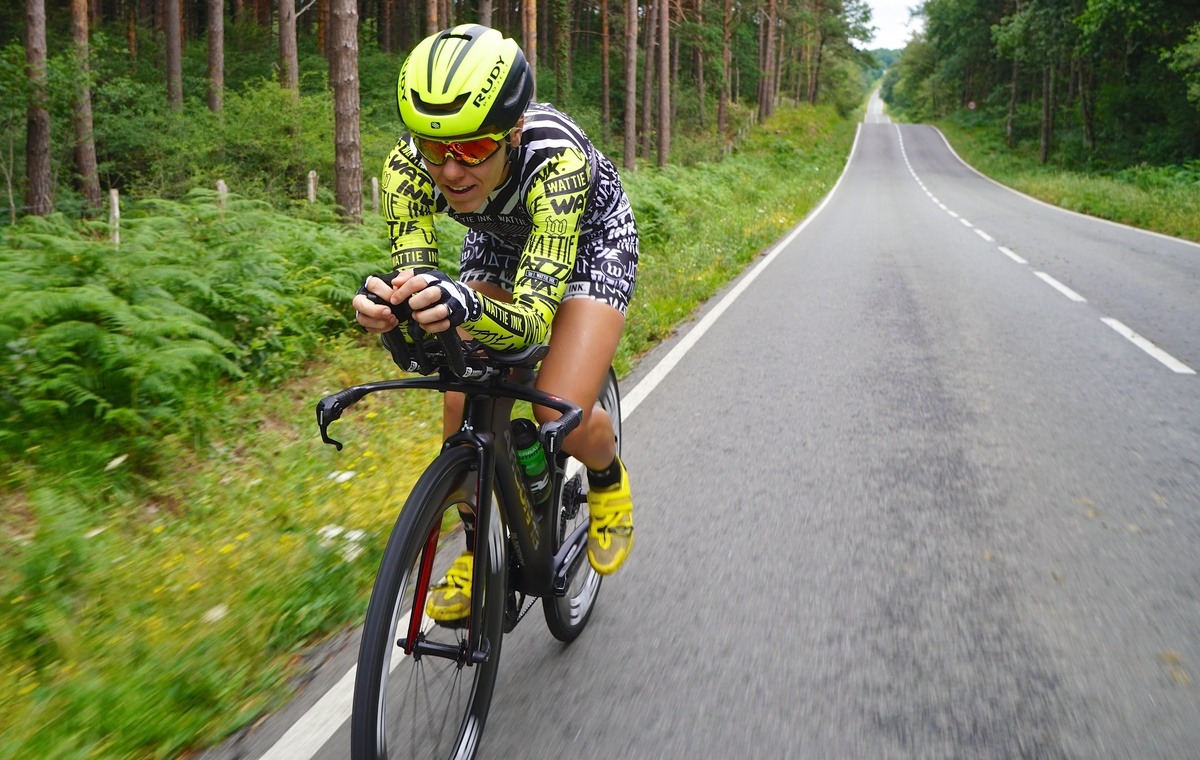

Featured
What Do You Eat During A Triathlon
Modified: August 19, 2023
Discover what to eat during a triathlon and boost your performance with our featured nutrition guide. Fuel your body with the right foods for optimal results.
Introduction
When it comes to competing in a triathlon, proper nutrition plays a crucial role in ensuring optimal performance. The demanding nature of the race requires participants to fuel their bodies strategically throughout each stage. Whether you’re a seasoned triathlete or a newbie to the sport, understanding what to eat during a triathlon is essential.
Triathlons are endurance-based events that encompass three disciplines: swimming, cycling, and running. Each segment presents unique challenges, and it’s important to provide your body with the necessary nutrients to sustain energy levels and enhance performance.
During a triathlon, you’ll need to plan your nutrition strategy based on the duration of the race and the intensity at which you’re competing. It’s important to strike a balance between carbohydrates, proteins, fats, and hydration to optimize your energy levels and maintain proper bodily function.
In this article, we will discuss the different stages of a triathlon and the nutrition strategies you should consider for each segment. From pre-race nutrition to post-race recovery, we will guide you on what to eat and how to fuel your body effectively throughout the entire triathlon experience.
Keep in mind that everyone is unique, and nutritional needs can vary depending on personal preferences, training levels, and physiological factors. It’s always a good idea to experiment with your nutrition plan during training to find what works best for you. Now, let’s delve into the world of triathlon nutrition and discover how to maximize your performance on race day.
Pre-Race Nutrition
Proper pre-race nutrition sets the foundation for a successful triathlon. It’s important to fuel your body adequately so that you have enough energy to perform at your best without feeling sluggish or fatigued. Here are some key factors to consider when planning your pre-race nutrition:
- Carbohydrates: Focus on consuming complex carbohydrates such as whole grains, fruits, and vegetables. These provide a steady release of energy and help top up muscle glycogen stores. Aim to have a carbohydrate-rich meal 2-3 hours before the race.
- Protein: Include a moderate amount of protein in your pre-race meal to aid in muscle repair and recovery. Opt for lean protein sources like chicken, fish, tofu, or beans.
- Hydration: Start hydrating well in advance of the race to ensure proper hydration status. Drink water throughout the day and consider consuming an electrolyte drink to replenish electrolytes lost through sweating.
- Avoid Heavy Foods: Steer clear of foods that are high in fat, fiber, or protein immediately before the race. These can cause digestive discomfort and may slow down the absorption of nutrients.
- Experiment: Prior to race day, experiment with different pre-race meals during your training sessions to find what works best for your body. Everyone’s digestive system responds differently, so find a routine that leaves you feeling energized and comfortable.
Remember, the goal of pre-race nutrition is to provide your body with easily digestible and readily available energy sources. It’s also important to consume complex carbohydrates and proteins to lay a solid foundation for sustained energy throughout the race. Lastly, stay hydrated to optimize your performance and help regulate body temperature during the triathlon.
Nutrition During the Swim
Unlike the bike and run segments, nutrition intake during the swim portion of a triathlon is not feasible due to the obvious constraints of being in the water. However, it is still important to consider your overall hydration levels before diving into the water. Here are a few tips to keep in mind:
- Pre-Swim Hydration: Ensure that you have properly hydrated in the hours leading up to the race. This will help maintain your body’s fluid balance and minimize the risk of dehydration during the swim.
- Electrolyte Balance: Electrolytes play a vital role in maintaining proper muscle function and hydration. Before the swim, consider consuming an electrolyte drink to ensure adequate electrolyte levels.
- Stay Calm: During the swim, focus on your technique and maintaining a steady pace. Keeping your mind calm and focused will help conserve energy and minimize the need for additional nutrition.
In shorter distance triathlons, such as sprints or Olympic distances, the swim duration is relatively short, ranging from a few minutes to an hour. In these cases, it may not be necessary to consume solid food during the swim. Instead, focus on your hydration and electrolyte balance to support your overall performance.
In longer distance races, such as Ironman or Half-Ironman, where the swim duration can be over an hour, some athletes may opt to use energy gels or sports drinks with higher caloric content during the swim. However, this approach should be experimented with during training to ensure it doesn’t affect your performance or lead to gastrointestinal distress.
Remember, the swim leg of the triathlon primarily serves as a warm-up for the bike and run. It’s important to prioritize hydration and electrolyte balance during this segment, but the bulk of your nutrition intake will happen during the bike and run sections.
Transition 1: Swim to Bike
The transition from the swim to the bike is a crucial phase where you need to refuel and prepare for the cycling leg. Here are some key nutrition considerations for a smooth transition:
- Quick Nutrition: Make sure to have easily digestible nutrition options readily available in your transition area. Energy gels, energy bars, or small sandwiches can provide a quick source of energy to kickstart your ride.
- Hydration: Take a moment to hydrate during the transition. If necessary, sip on an electrolyte drink to replenish fluids and electrolytes lost during the swim. Proper hydration will help maintain energy levels and prevent muscle cramps.
- Carbohydrate Reload: Use this transition period to further fuel up on carbohydrates. Consume a carbohydrate-rich snack or sports drink to replenish glycogen stores and provide sustained energy throughout the biking leg.
- Timing: Keep in mind that the transition should be as efficient as possible, as the clock is still running. Plan your nutrition strategically to minimize the time spent in transition and be mindful of the logistics of consuming food while getting ready for the bike leg.
Remember, the swim to bike transition is a critical moment to replenish energy stores and hydrate. By making smart choices and having easily accessible nutrition options, you’ll optimize your performance and be ready to tackle the cycling leg with renewed energy.
Nutrition During the Bike
The bike leg of a triathlon is often the longest portion of the race, ranging from a few hours to several hours for longer distances. Proper nutrition during this stage is vital to sustain energy, maintain performance, and avoid fatigue. Here are some key nutrition strategies to consider while cycling:
- Hydration: Hydration is essential during the bike leg. Aim to drink fluids at regular intervals to prevent dehydration. Carry a water bottle or use a hydration pack for easy access to fluids.
- Electrolyte Replacement: Along with hydration, replenishing electrolytes is important to maintain muscle function and prevent cramping. Consider consuming electrolyte tablets or sports drinks that contain electrolytes.
- Carbohydrate Intake: During longer rides, aim to consume carbohydrates to maintain glycogen levels. Energy gels, bars, or real food options like bananas or sandwiches can provide the necessary fuel. Aim for a steady intake of carbohydrates throughout the duration of the bike leg.
- Timing: Plan your nutrition strategy based on the duration of the bike leg. As a general guideline, aim to consume carbohydrates and fluids every 20-30 minutes, adjusting the quantity as needed based on your intensity level and sweat rate.
- Experiment and Practice: Prior to race day, experiment with various nutrition options during your training rides to find what works best for you. Pay attention to how your body responds to different foods and drinks to optimize your nutrition plan.
It’s important to note that everyone’s nutritional needs can vary. Some athletes may prefer solid foods, while others may rely more on energy gels and sports drinks. Find the combination that suits your digestion and provides the sustained energy you need to perform your best.
Remember, the bike leg is when the majority of your nutrition intake will occur, as you have more opportunity to consume food and fluids. By maintaining proper hydration and fueling your body with carbohydrates and electrolytes, you’ll have the energy to finish the cycling leg strong and transition smoothly into the run.
Transition 2: Bike to Run
The transition from the bike to the run is a critical phase where you need to switch gears and prepare your body for the final leg of the triathlon. Here are some important considerations for a successful transition:
- Nutrition Timing: Aim to consume a small amount of easily digestible carbohydrates during the final part of your bike ride. This will prime your body for the upcoming run and provide a steady source of energy.
- Hydration: Take a moment to hydrate and replenish fluids lost during the bike leg. Sip on water or an electrolyte drink to maintain hydration levels and prevent cramping.
- Mindset: Mentally prepare yourself for the transition from cycling to running. It can be challenging to switch muscle groups and adjust to the different demands of running. Focus on maintaining a positive mindset and embracing the change.
- Appropriate Footwear: Ensure you have the appropriate running shoes ready in your transition area. Switching from cycling shoes to comfortable running shoes will enhance your running experience and reduce the risk of discomfort or injury.
During this transition, it’s important to strike a balance between effectively refueling and keeping the transition efficient. Consuming a small amount of carbs and hydrating before starting the run will provide the necessary energy without causing discomfort or digestive issues.
Remember, the transition from the bike to the run requires mental fortitude and physical adaptation. By focusing on proper nutrition and hydration, as well as having the right mindset, you’ll set yourself up for a successful run leg and bring yourself closer to the finish line.
Nutrition During the Run
The run leg of a triathlon can be physically demanding, and maintaining proper nutrition is crucial to sustain energy levels and performance. Here are some key considerations for your nutrition strategy during the run:
- Hydration: Hydration should remain a priority during the run. Sip on water or electrolyte drinks at aid stations or carry a handheld bottle or hydration pack to maintain hydration levels.
- Quick Carbohydrates: Consuming easily digestible carbohydrates during the run can provide a quick source of fuel. Energy gels, chews, or sports drinks with carbohydrates are popular choices. Aim to consume them at regular intervals to maintain energy levels.
- Electrolyte Balance: As you continue to sweat during the run, replenishing electrolytes is important to prevent muscle cramps and maintain proper muscle function. Consider consuming electrolyte tablets or sports drinks that contain electrolytes.
- Timing: Stagger your nutrition intake during the run based on the duration and intensity of the race. Experiment with the timing and quantity of carbohydrate intake during your training runs to find what works best for you.
- Listen to Your Body: Pay attention to your body’s signals and adjust your nutrition strategy accordingly. If you feel the need to take in more fluids or carbohydrates, do so. It’s important to fuel your body based on its individual needs.
Keep in mind that the run leg is typically the final stage of the triathlon, so it’s important to pace yourself and maintain a steady fueling strategy. Avoid consuming large quantities of food or fluids that may cause digestive discomfort.
Experiment with different nutrition options during your training runs to determine what works best for your body. Every athlete is unique, and it may take some trial and error to find the perfect nutrition plan that keeps you energized and performing at your best.
By staying hydrated, consuming carbohydrates, and maintaining electrolyte balance, you’ll optimize your nutrition during the run and cross the finish line with strength and determination.
Post-Race Nutrition
After you cross the finish line, it’s important to focus on post-race nutrition to aid in recovery and replenish your body. Proper post-race nutrition can enhance muscle repair, restore energy levels, and promote overall recovery. Here are some key guidelines:
- Hydration: Replenish fluids lost during the race by drinking water or electrolyte-rich beverages. Aim to rehydrate as soon as possible to restore your body’s fluid balance.
- Carbohydrate Reload: Consume a meal or snack that is rich in carbohydrates to replenish glycogen stores. Foods like whole grains, fruits, and vegetables are excellent choices to provide a steady release of energy.
- Protein Intake: Include a source of protein in your post-race meal to support muscle repair and recovery. Lean protein options such as chicken, fish, tofu, or beans can provide the necessary amino acids your body needs.
- Anti-Inflammatory Foods: Incorporate foods rich in antioxidants and anti-inflammatory properties to aid in muscle repair and reduce inflammation. Examples include berries, leafy greens, nuts, and fatty fish like salmon.
- Timing: Try to consume a balanced meal or snack within 30-60 minutes after the race. This window of time is crucial for optimal nutrient absorption and muscle recovery.
Listen to your body’s signals and eat according to your hunger cues. Pay attention to the quality of the food you consume and focus on nourishing your body with wholesome, nutrient-dense options.
It is also important to note that post-race nutrition can vary depending on the duration and intensity of the race. For longer distance races, such as Ironman or ultra-marathons, recovery nutrition may need to be more comprehensive and may require the addition of supplements or specialized recovery drinks. Consulting with a sports nutrition professional can provide personalized guidance based on your specific needs.
Remember, post-race nutrition plays a significant role in your overall recovery. By providing your body with the necessary nutrients, hydration, and rest, you’ll optimize your recovery process and set yourself up for future success.
Conclusion
Proper nutrition is a fundamental component of triathlon training and performance. By strategically fueling your body before, during, and after the race, you can optimize your energy levels, enhance performance, and support overall recovery. Here’s a quick recap of the key points discussed:
- Pre-race nutrition sets the foundation for a successful triathlon. Focus on consuming carbohydrates, include moderate amounts of protein, and prioritize hydration.
- During the swim leg, hydration is key, but solid food intake is not feasible. Prioritize pre-swim hydration and electrolyte balance.
- The transition from the swim to the bike is an opportunity to refuel quickly. Consume easily digestible carbohydrates and hydrate before starting the cycling leg.
- The bike leg is the longest segment, and proper nutrition is essential. Consume carbohydrates, hydrate regularly, and replenish electrolytes.
- The transition from the bike to the run is a critical phase. Prioritize hydration, consume quick carbohydrates, and mentally prepare for the change.
- During the run, maintain hydration, consume carbohydrates, and monitor your body’s signals for appropriate nutrition timing and intake.
- After the race, focus on post-race nutrition to aid in recovery. Rehydrate, consume carbohydrates, include protein, and incorporate anti-inflammatory foods.
Remember, nutrition strategies may vary among individuals, and it’s important to experiment and find what works best for your body through training sessions. Listening to your body’s cues and seeking guidance from a sports nutrition professional can provide valuable insights.
So, whether you’re a seasoned triathlete or embarking on your first race, prioritize your nutrition to optimize your performance, fuel your body effectively, and achieve your triathlon goals. With the right nutrition strategy, you’ll enhance your endurance, speed, and overall enjoyment of the triathlon experience.
